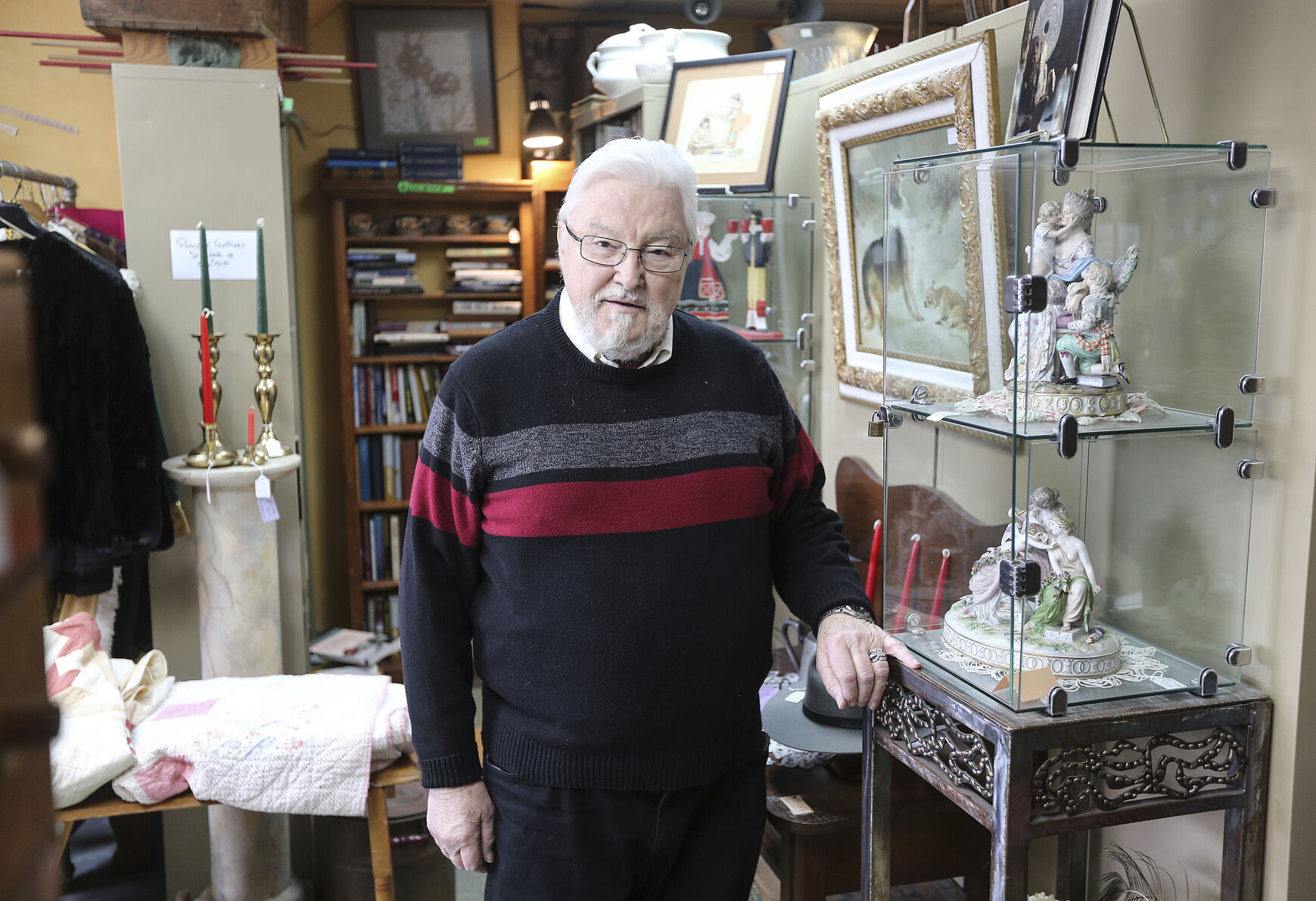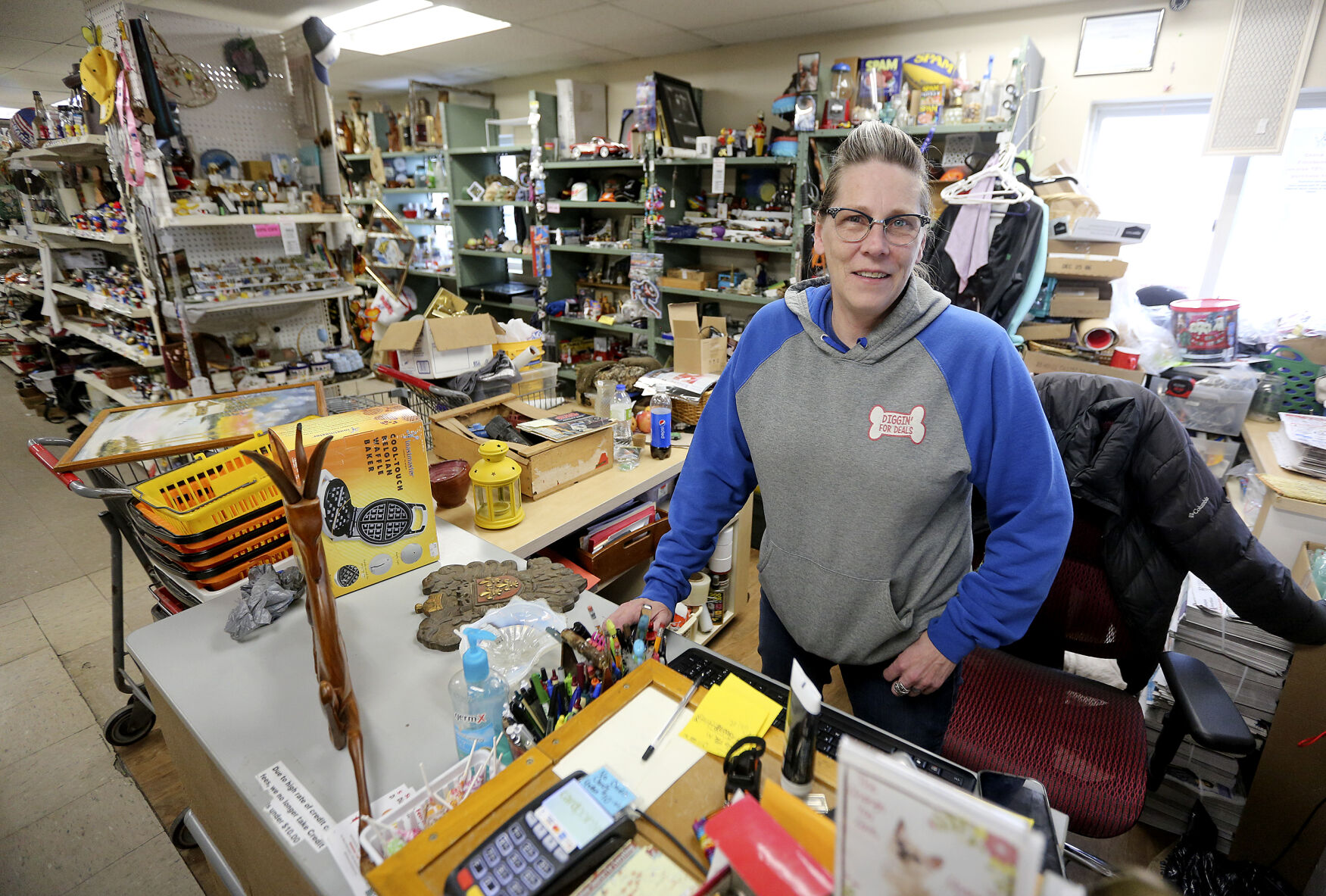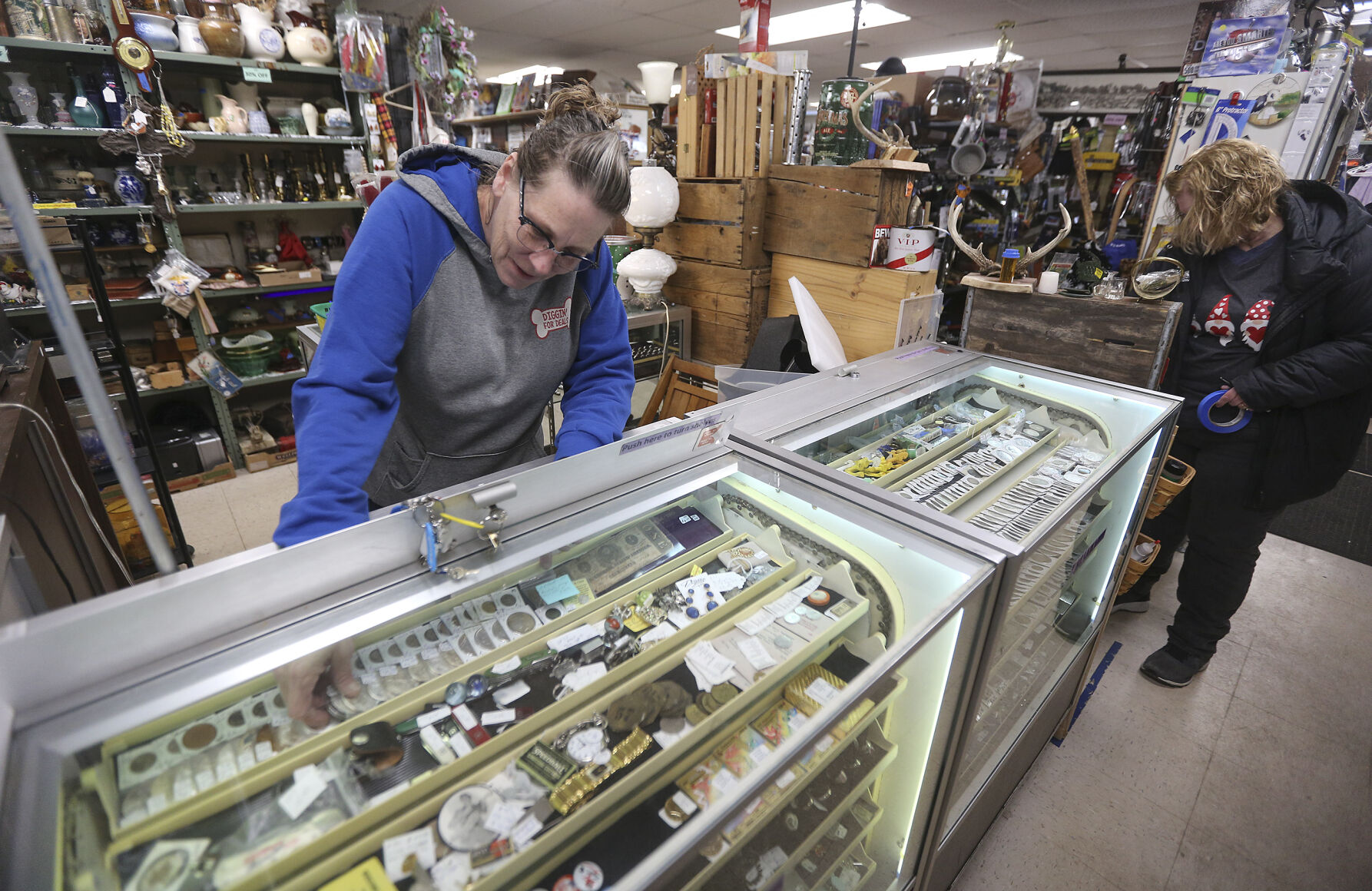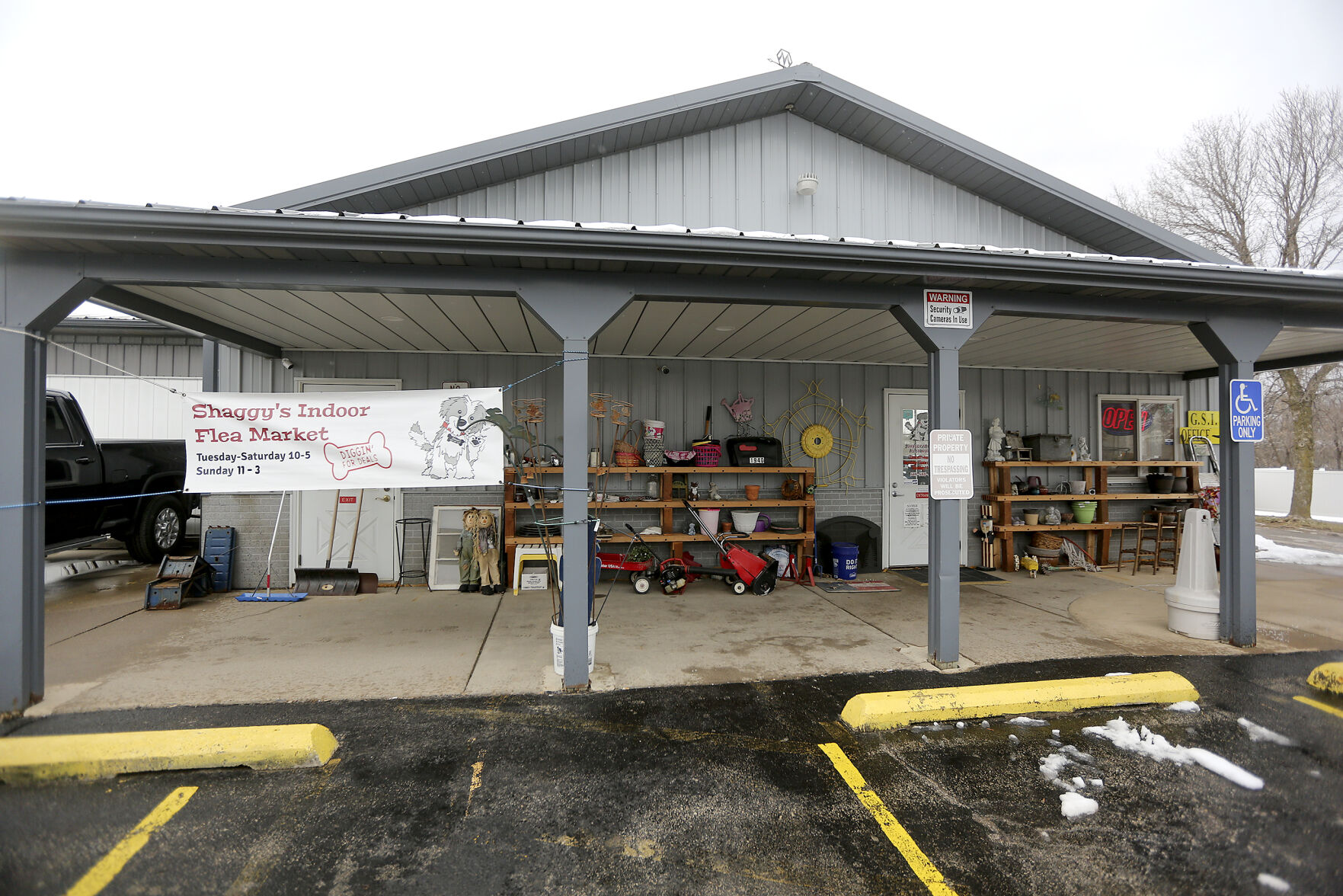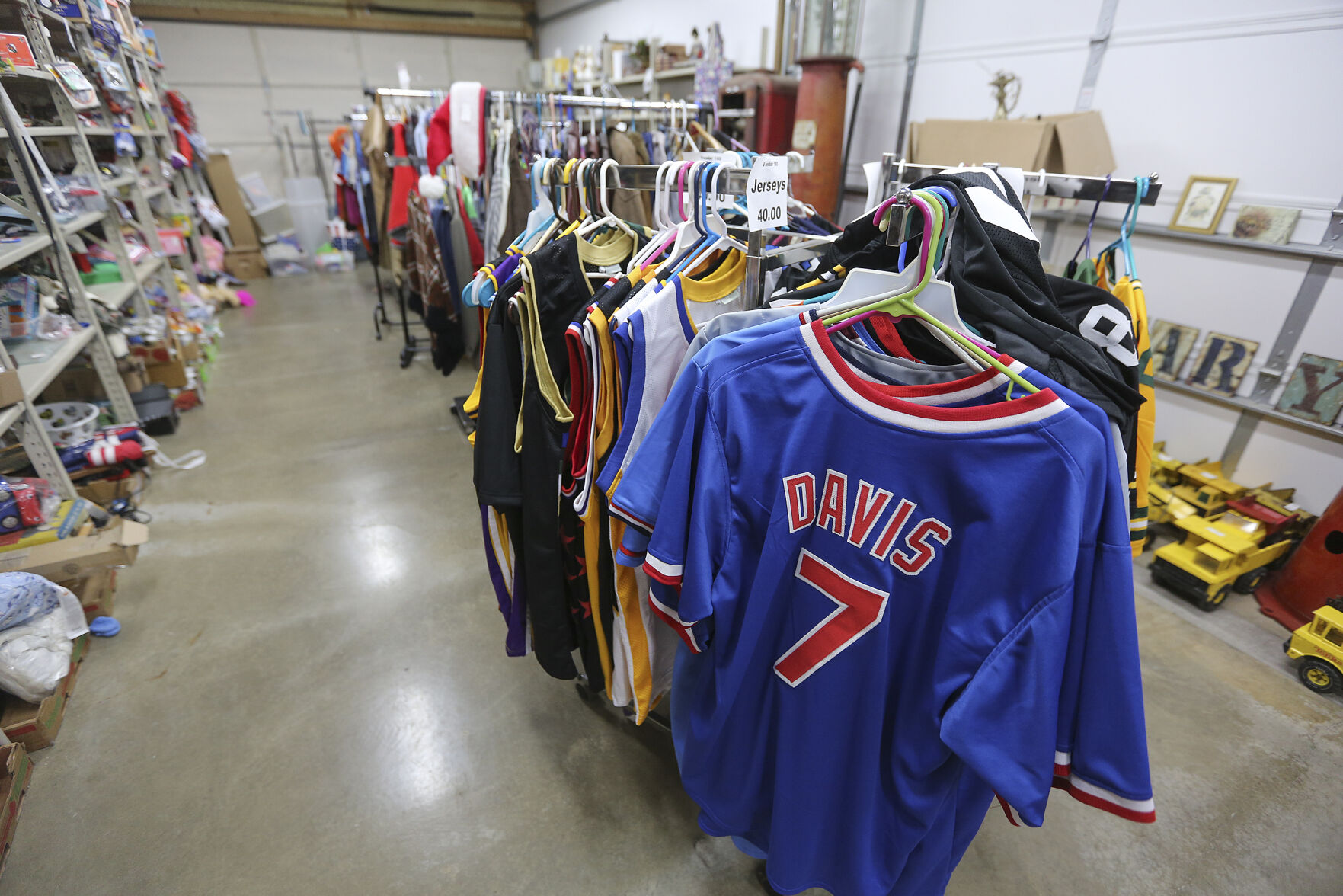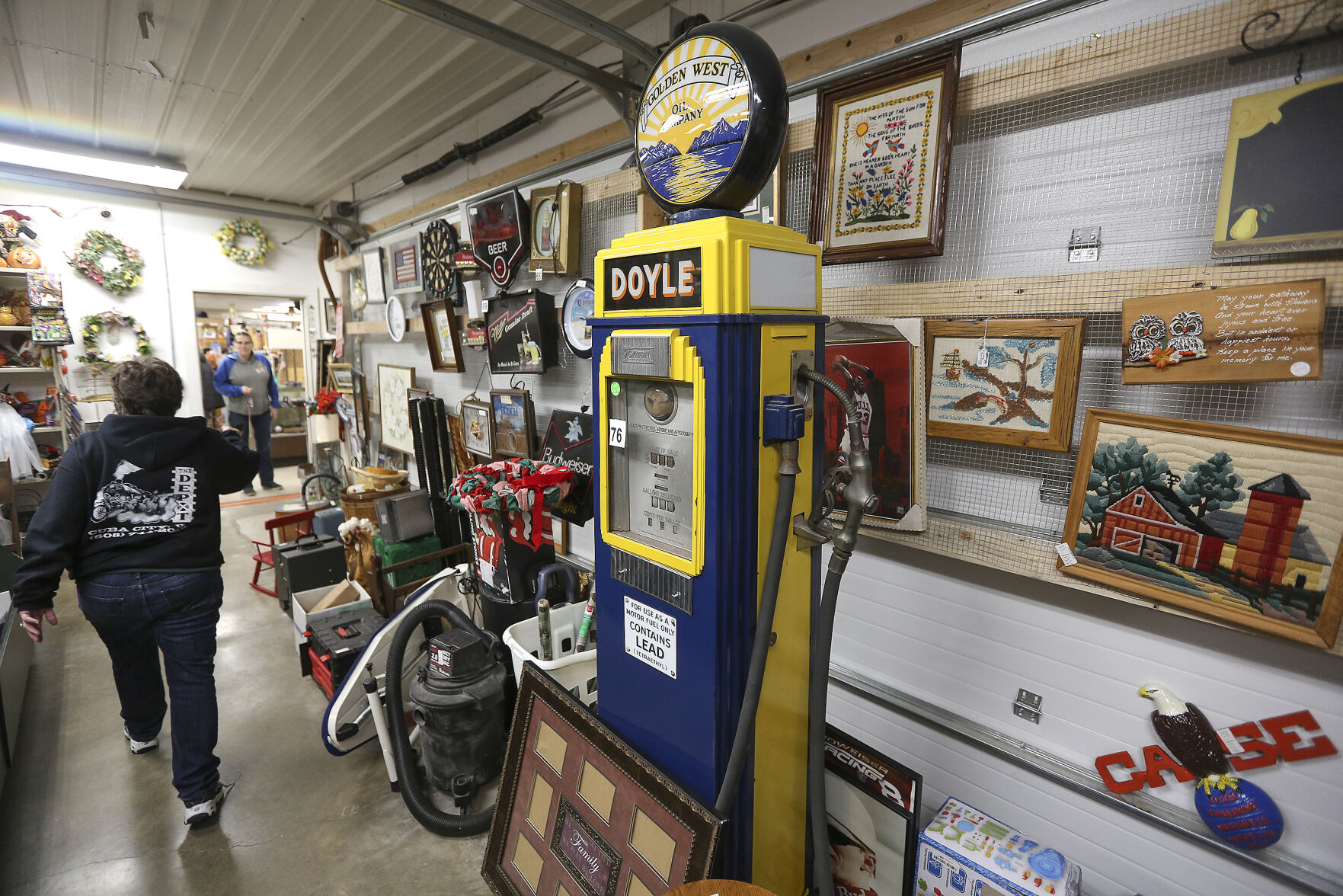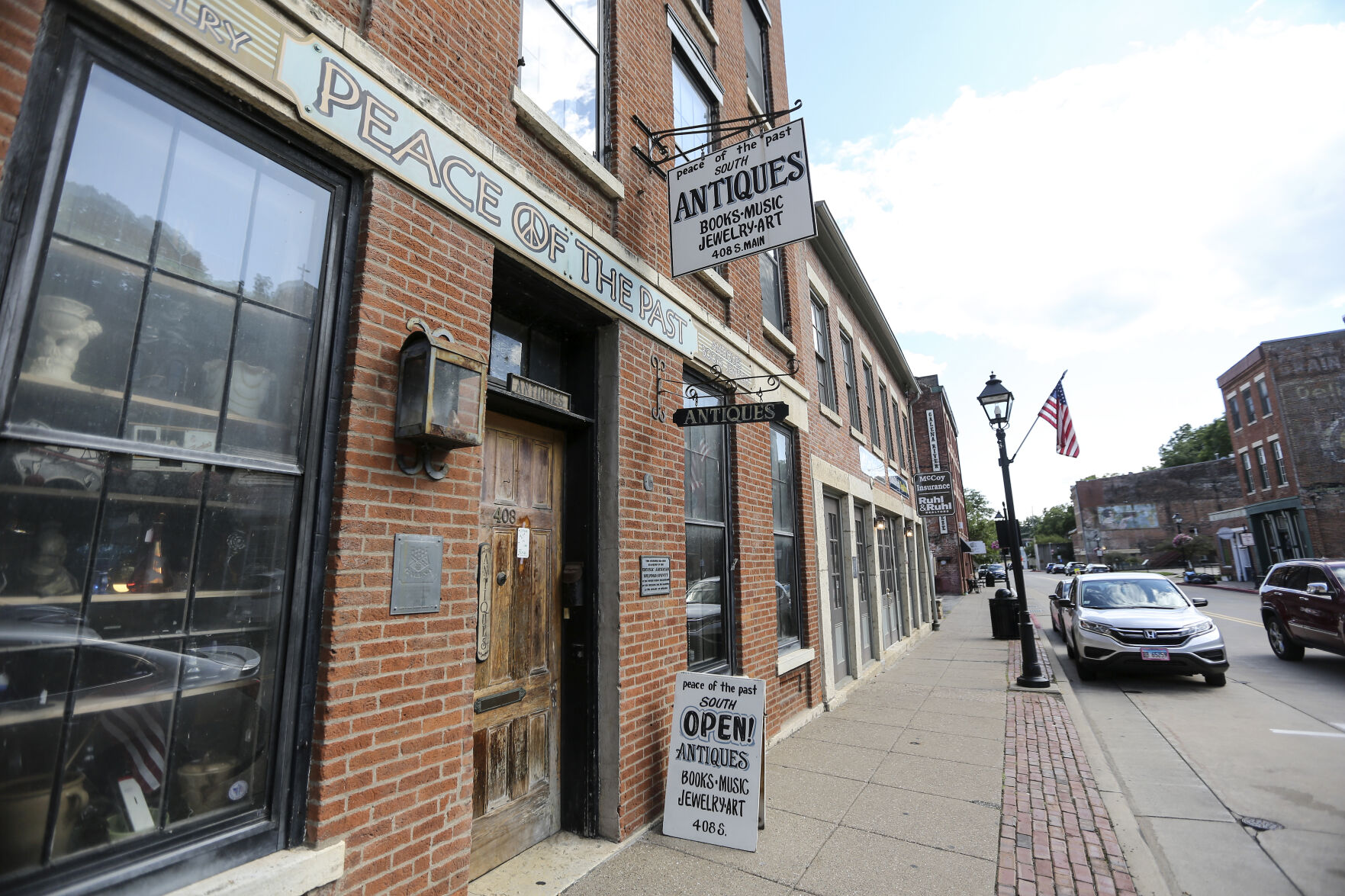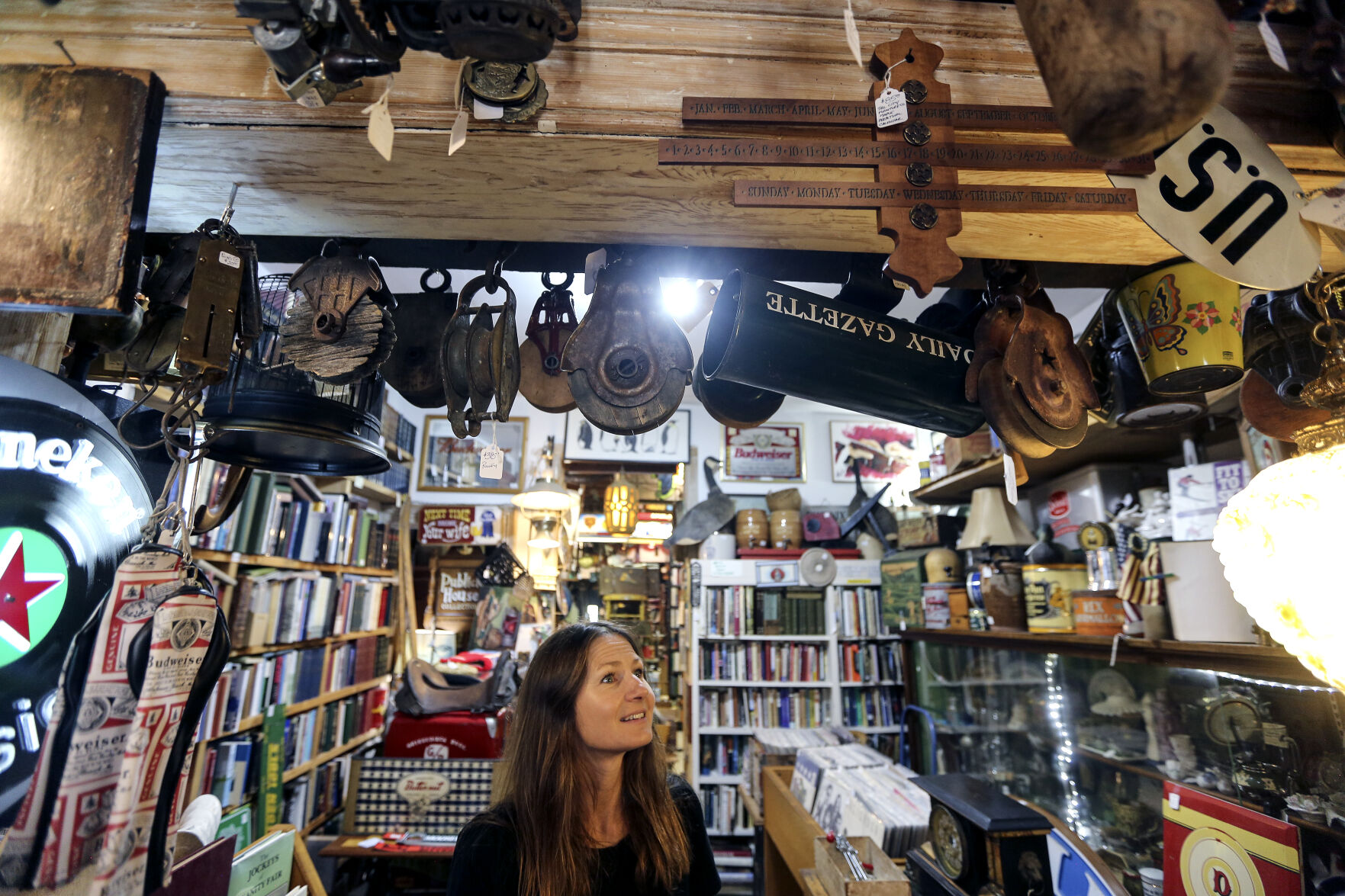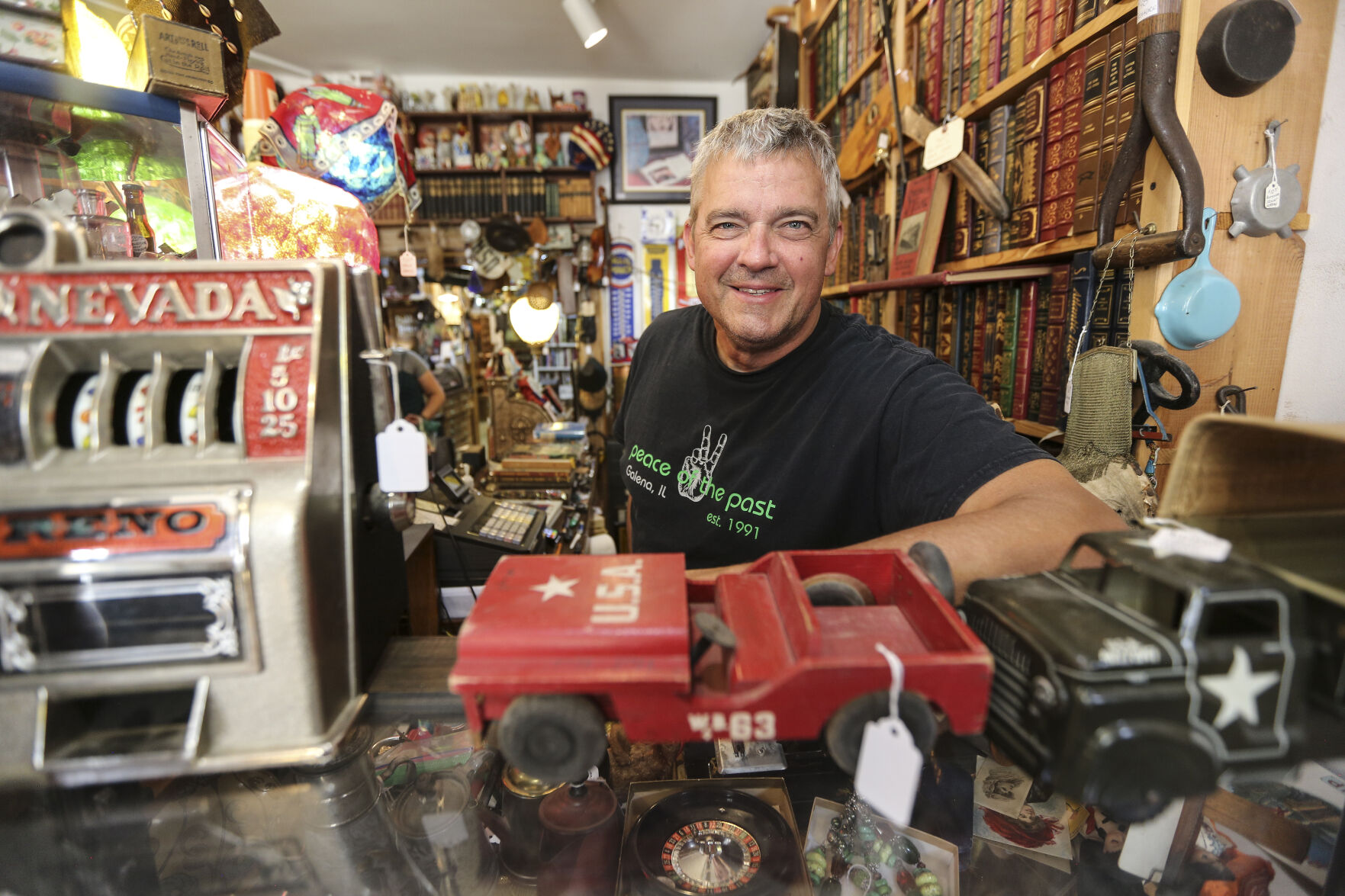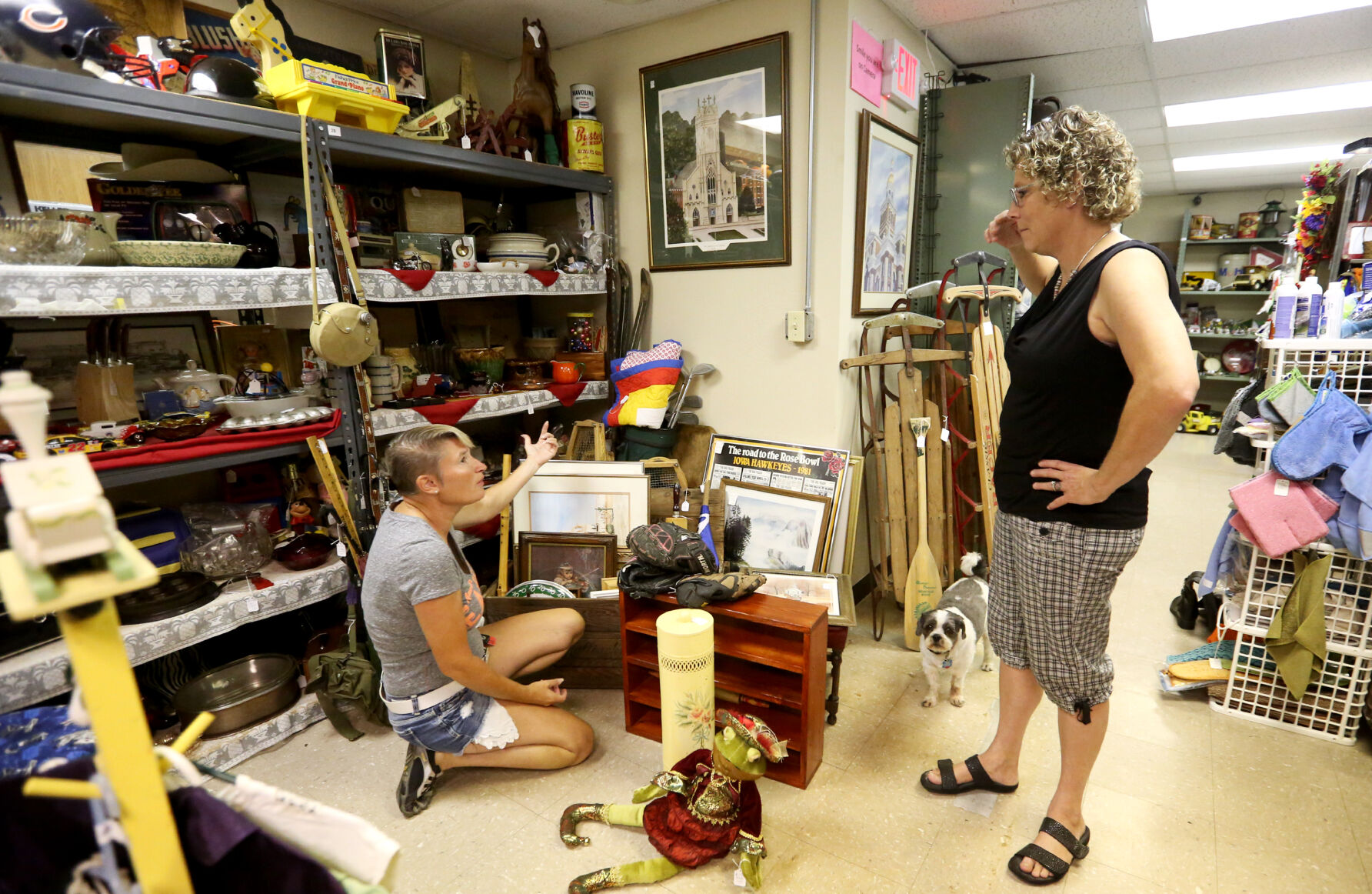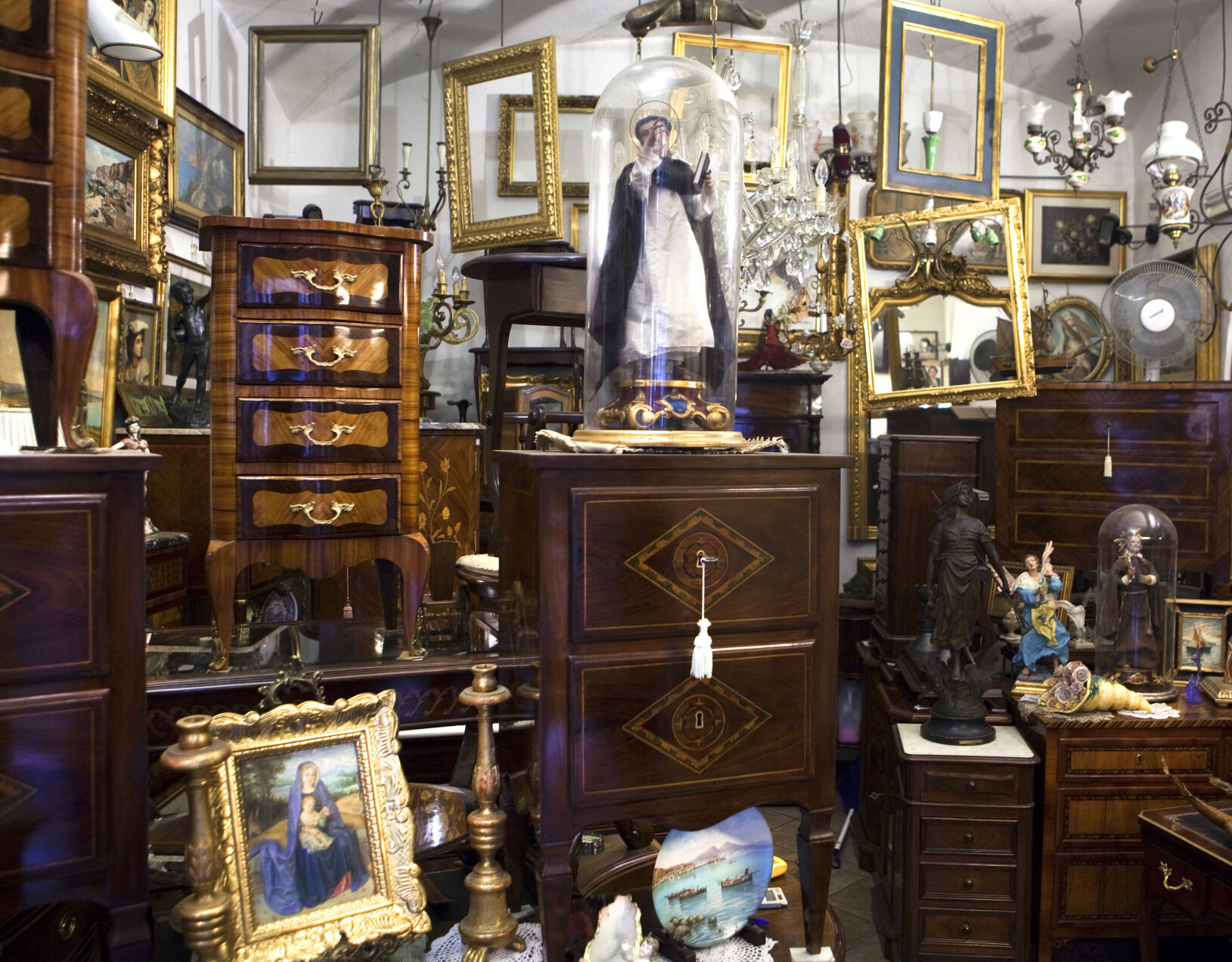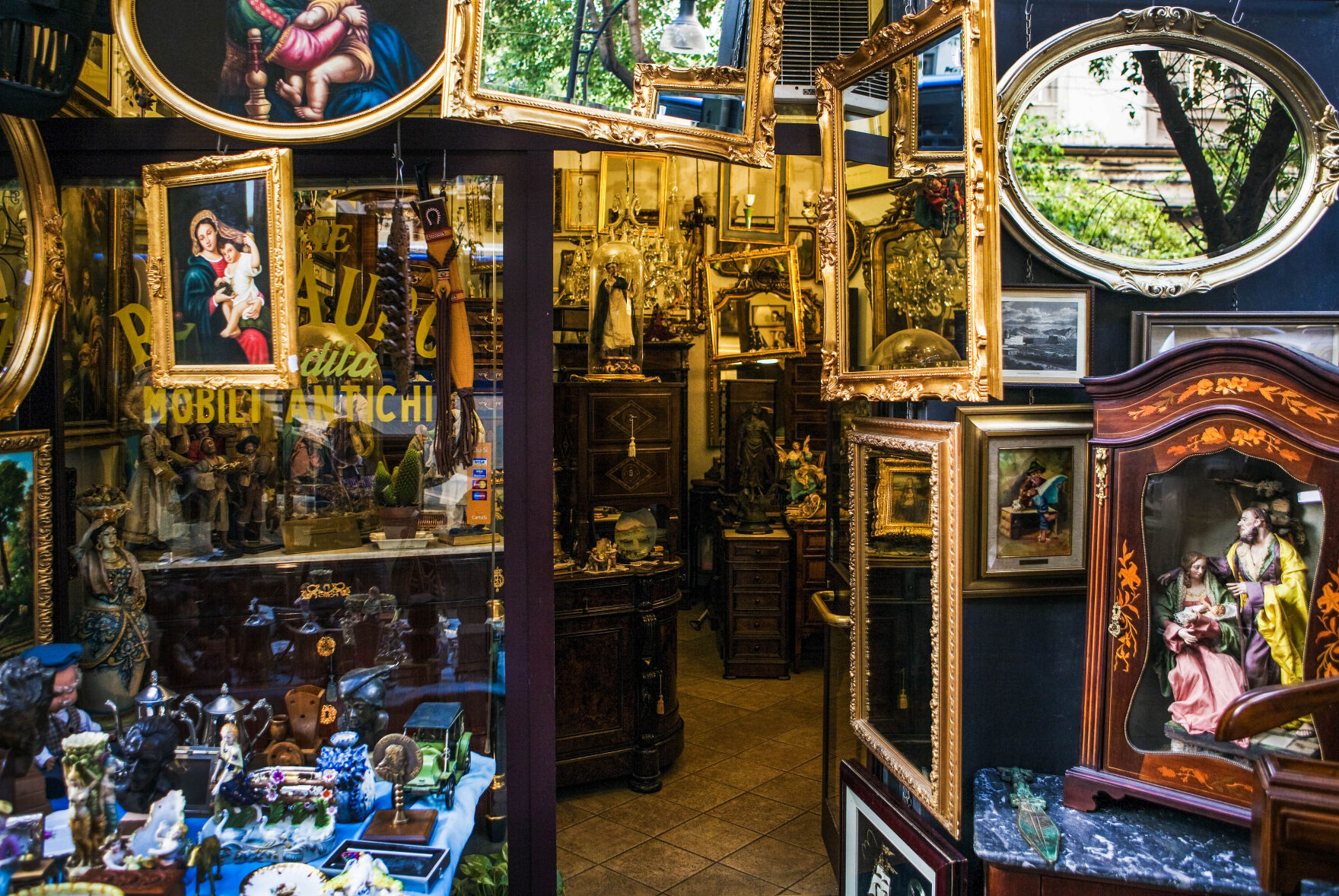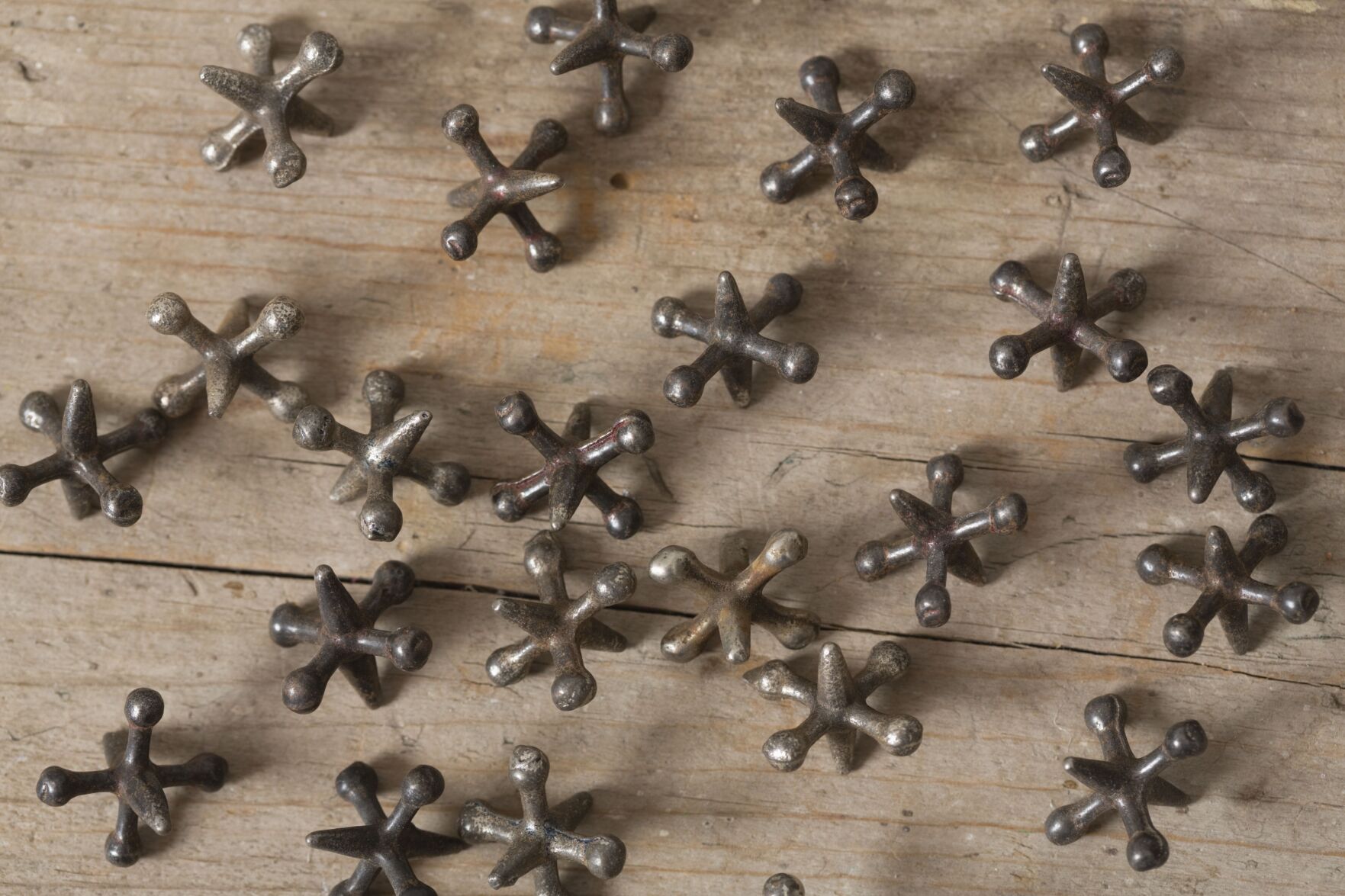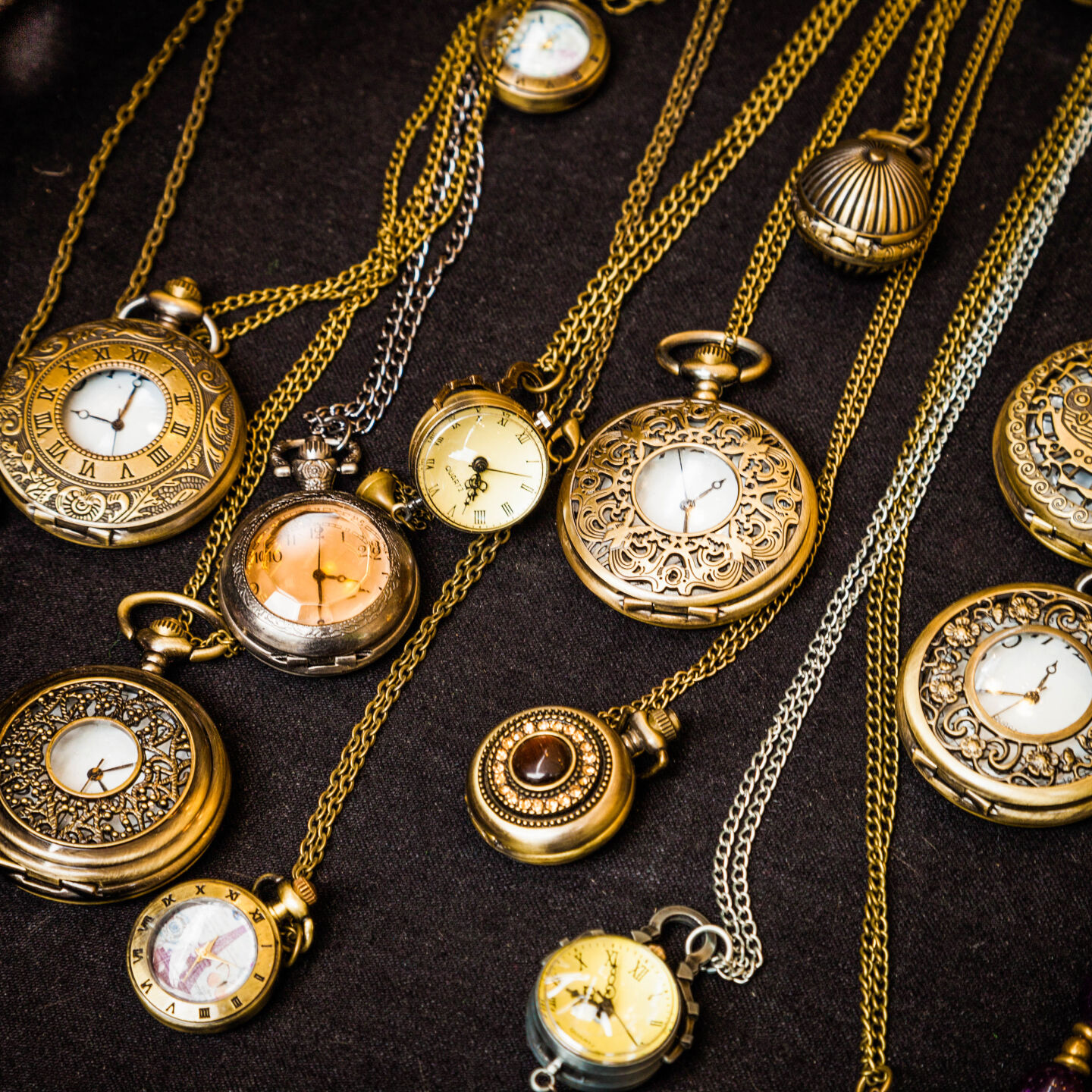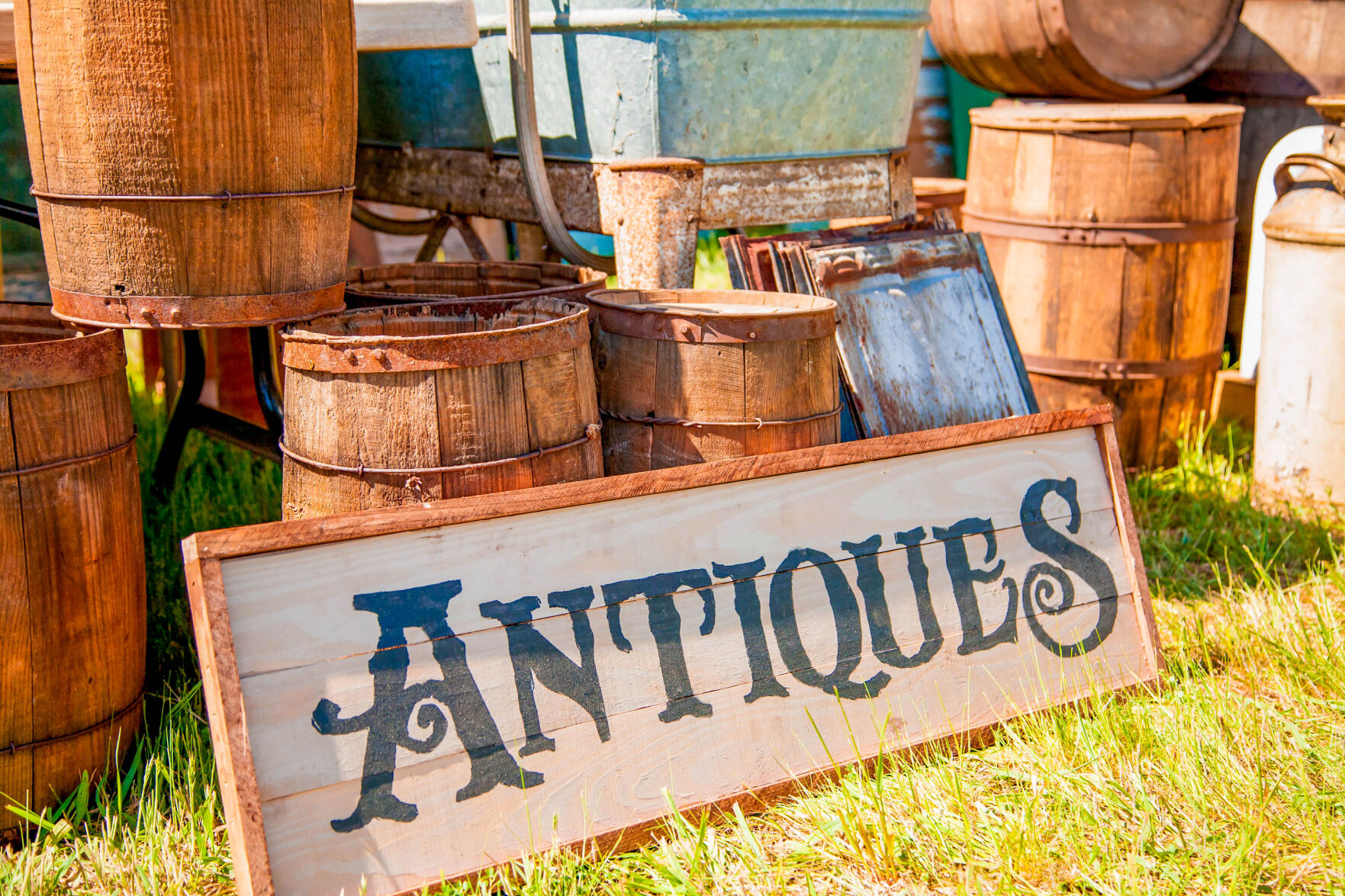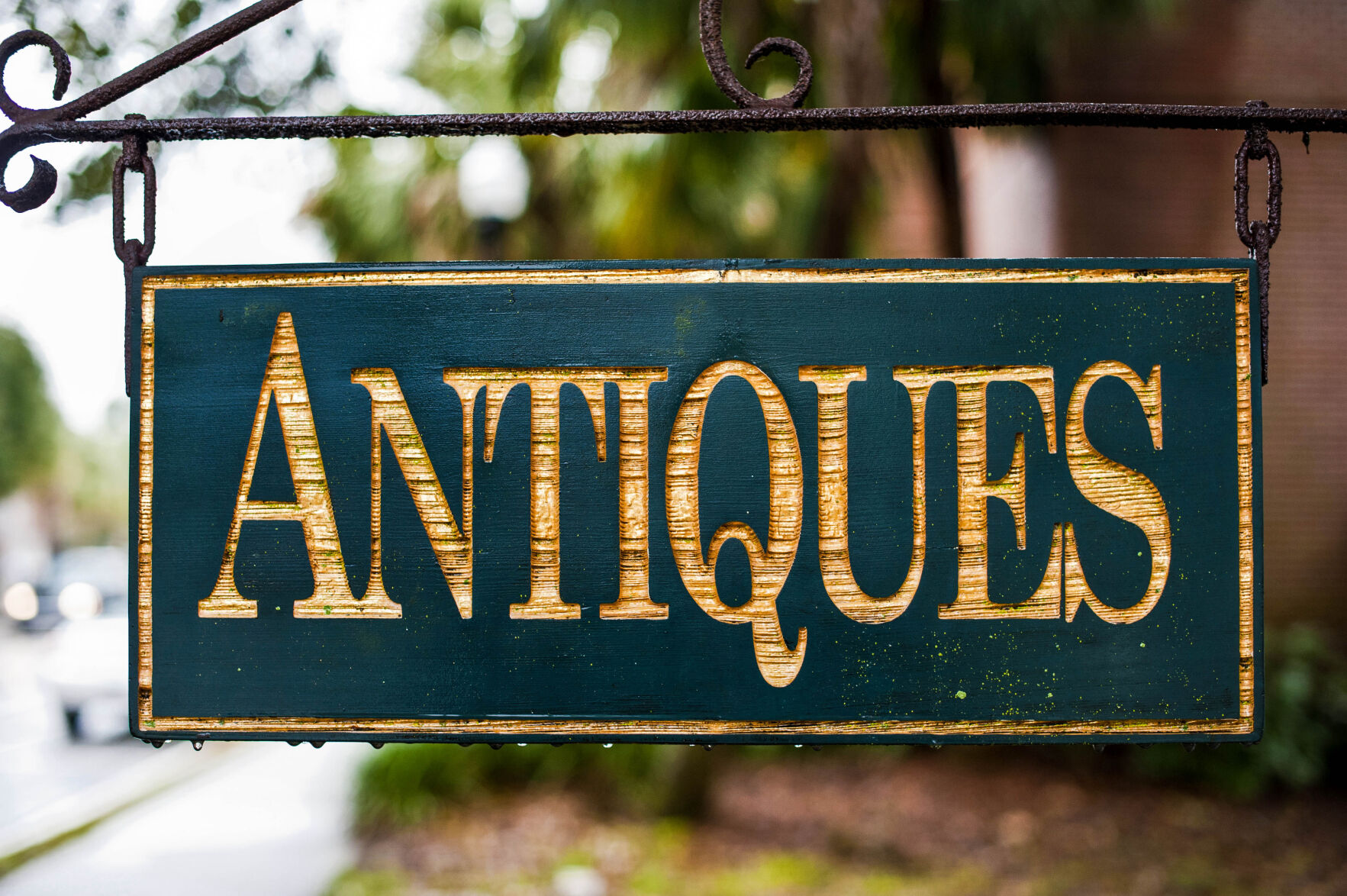Antiques mall: Antiques dealers rent booth space on a monthly basis to sell furniture, linens, artwork and other collectibles. Some mall owners ask dealers to work at the mall a specific number of hours per month. The mall owner takes a percentage of the items sold.
Consignment shop: Customers bring items such as designer clothing and accessories, artwork and other high-end items to sell. The shop owner takes a percentage when the item is sold.
Flea markets: Usually held outdoors in a parking lot or field. Sellers rent space to sell secondhand goods.
Thrift stores: Community members donate items so that the organization (usually a nonprofit) running the shop raises money to fund their programs.
Vintage store: Specializes in clothing, vinyl albums, toys, decor, housewares and other items that are older than 40 years.
Whether it’s antique furniture, vinyl records, vintage toys, jewelry, old advertising signage, wood yardsticks from long-gone businesses, stamps, coins, vintage clothing or hundreds of other items, chances are someone collects it and is always on the hunt to add to their collection of treasures.
The hunt to find antiques could lead to consignment shops, flea markets, antiques malls or shops, estate or garage sales and thrift shops. There are also online options such as Facebook Marketplace, Craigslist, eBay and local buying and selling groups.
As a guide, to be considered an antique, an item has to be at least 100 years old. The term “vintage” is used for items that are at least 40 years old. “Retro” are items that are at least 20 years old, but less than 40 years old. Midcentury modern, or MCM, which is very popular right now is defined as items from the middle of the 20th century, from 1933 to 1965.
An eclectic mix
Antique shops are one of the many things that draw tourists to Galena. Ronn Toebaas is a Galena antiques dealer at Peace of the Past North, an antiques shop owned by Bill Karberg. Karberg started his first shop, Peace of the Past in 1992 on S. Main Street and opened his second shop, Peace of the Past North in 2013 on N. Main Street.
“When Bill opened his second shop, he invited me to join him as an associate with space to sell my own antiques,” Toebaas said. “We’ve been in business together for 10 years and it’s been a wonderful experience.
“Before that, I had dabbled in antiques, having garage sales and doing periodic antiques flea markets. I was frequently a picker looking for and buying collectible items for other antiques dealers. When Bill offered me space in his shop, I jumped at the opportunity.”
Toebaas describes the shop as an “very eclectic mix of antiques and collectibles along with a large selection of artwork.
“Bill specializes in books, pottery crocks, vintage record albums, beer memorabilia and one-of-a-kind primitives,” he said. “I carry Native American pottery, baskets, turquoise jewelry, Scandinavian pieces and vintage costumes and clothing.”
Toebaas said there is a collector for just about anything imaginable and he’s seeing a younger generation who are buying and appreciating older items.
“Old books are always in demand,” he said. “Young people are drawn to old technology including old cameras, telephones and typewriters. And the younger buyers like to repurpose vintage pieces — old barn ladders become shelves, towel bars and racks for hanging kitchen utensils. Old canning jars become storage containers for flour, sugar, rice and pasta. Old suitcases are stacked to create end tables.
“Collectors are interesting people. It’s a pleasure to help them find their treasures.”
Honoring history
Lisa Hammel likes the history of antiques. In June 2017, Hammel opened Shaggy’s Indoor Flea Market with her husband Brian and their two children Bryce and Brisa.
“I believe antique items were made with better quality and a lot of them are handmade,” Hammel said. “Each item has a story to be told, and I love helping spark nostalgic memories when customers come to my store. The flea market is named after our late family dog, Shaggy, who is our inspiration in naming the business.”
It’s fitting that the business is named after Shaggy as the store is located in the former Dubuque Regional Humane Society building.
Shaggy’s has 140 antiques dealers selling tens of thousands of items that range from 150-plus years old to new.
“My vendors fill their booths with anything they think will sell,” Hammel said. “I never know what my vendors will bring in. A lot of the items are collectible items, vinyl records, glassware, home decor, tools and so much more. I always say there is something for everyone at Shaggys’s. You truly never know what you will find.”
Hammel said that albums, uranium glassware, brass and collectibles sell well at the flea market and that she’s seeing a younger demographic buying antiques and collectibles.
“Flea markets are great for budget conscious shoppers,” she said. “It’s easy to find good deals because our items are priced below retail stores. We also like to barter on things. If you see something and want to make an offer, we can always contact the vendor.
“Vintage items are also popular as they are a better quality and will last many more generations. The price point is also usually cheaper than buying the same item new. Vintage items tend to be made in America more often than new items made today.”
Good for the environment
According to terramovement.com, buying antiques and vintage items is good for the environment as they have a longer lifecycle and lower carbon footprint, which is around 16 times less than that of a newly manufactured piece of furniture. Antiques have a smaller impact on the environment as they were often made by hand without the use of electricity, chemicals and manmade materials.
Reusing vintage items and antiques also keeps them out of the landfill and reduces the consumption of new goods made outside the U.S. One of the leading causes of climate change is deforestation, and the furniture industry contributes heavily to deforestation. Buying antiques uses what has already been produced and provides the buyer with long lasting items.


